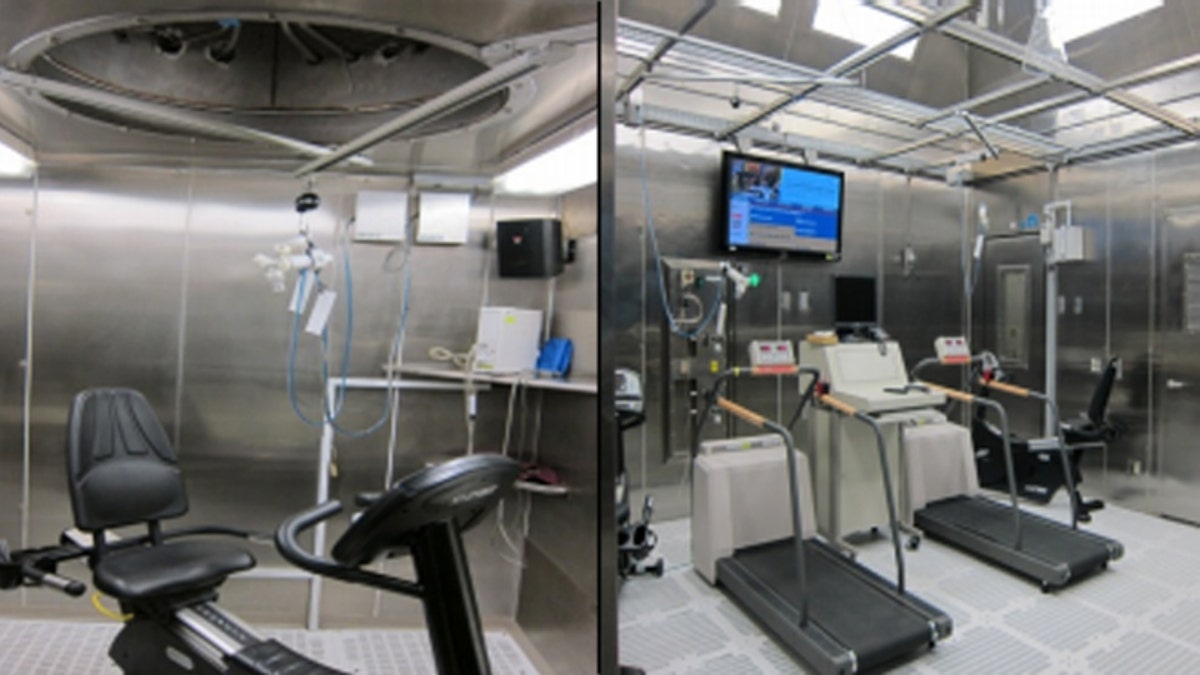
Shown here are EPA labs used to test the impact of pollutants on human subjects. (EPA OIG)
The Environmental Protection Agency has been testing the impact of pollutants on human subjects without always telling them about the risks of heavy exposure -- risks that include cancer, and even death.
The findings were included in a newly released EPA inspector general report, which urged the agency to overhaul its guidelines to make sure test subjects understand all the risks before signing up.
"[E]vidence suggests that at least some human study subjects would like to know if a study involves risk of death, even if the risk is very small," the report said.
The EPA is authorized under federal law to perform human testing, as part of its ongoing effort to regulate potentially harmful pollutants. The agency has spent millions of dollars on this research.
The IG report looked at five studies conducted in 2010 and 2011, at a University of North Carolina facility. It determined that, overall, the agency "followed applicable regulations" when it exposed 81 test subjects to "concentrated airborne particles or diesel exhaust emissions."
However, the IG's office found "inconsistencies" in the consent forms -- which only sometimes told test subjects about the full range of risks.
Before the subjects were brought into the labs to be exposed to pollutants, the forms compared the experience to visiting a big city on a smoggy day.
Only one of the studies, though, gave information on the "upper range of the pollutant" they would be exposed to, and only two alerted the subjects about the "risk of death for older individuals with cardiovascular disease," according to the report.
Further, the report said consent forms for two studies testing the impact of diesel exhaust "did not include the potential cancer effects of long-term exposure."
In response, the EPA said that it would "enhance" the language to include better information on potential risks.
In a written statement, though, the agency defended its work and noted the IG report confirmed it follows "all laws and regulations" concerning human testing "and has internal guidelines in place that exceed those normally required by universities, industry and other government agencies conducting human studies research."
The statement said: "EPA concurs with and is adopting the OIG's recommendations to ensure its policies and procedures are strengthened even further. ... All human exposure studies conducted by EPA scientists are independently evaluated for safety and ethics, and the results are peer-reviewed. EPA is committed to ensuring the protection of study participants."
A separate blog from the agency also said its studies are "highly controlled" and that the EPA is "embracing" the IG recommendations -- in part to share "even more information about exposure risks with study volunteers, even when these risks are minimal."
According to the IG report, the reason the agency gave for not informing subjects about the cancer risks was the risks associated with two-hour exposures "would be minimal." One manager said those risks are typically calculated over a lifetime exposure of 40 years.
The EPA reports that no one has died as a result of these tests.
However, several "adverse" events were reported over the testing period. This included subjects experiencing conditions ranging from a migraine to cardiac arrhythmia to decreased lung function. All those subjects were treated for those conditions.
Though the agency had argued that the more severe risks in all these cases were minimal, the IG report said the EPA should tell people about potential long-term risks so that subjects "can make the most informed decision possible."
The report also went into detail about the little-known testing that is conducted by the environmental agency. This testing is based out of the UNC campus, at a facility that allows researchers to pump "gaseous pollutants at precise concentrations" into enclosed chambers.
In the five studies the IG looked at, test subjects were offered payment ranging from $950 to $3,700.




